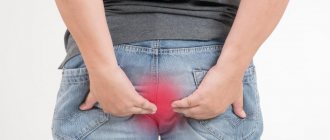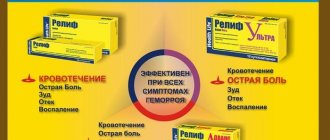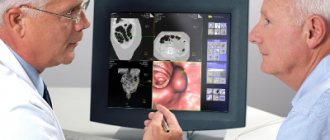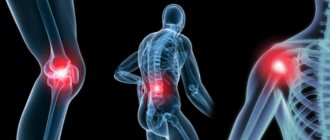November 15, 2021
276 621
12 minutes
Author, editor and medical expert – Klimovich Elina Valerievna.
Sore throat is a common symptom. According to statistics, 5% of patients of ENT doctors and therapists present this particular complaint3. It predominates in acute respiratory viral diseases (ARVI) and tonsillitis3, but its appearance can also be caused by other reasons.
Up to contents
Causes of sore throat
The occurrence of pain is associated with inflammation of the tissues of the pharynx or mechanical irritation of a large number of nerve endings located in its walls1.
In this case, the sensations can be very different - from soreness, tingling, stinging and dryness to pain itself: one-sided or bilateral, moderate or strong, sharp, scratching or pressing, aggravated by swallowing, radiating to the ear, temple or teeth1.
Infectious causes of pain
Almost any infectious-inflammatory disease of the upper respiratory tract is accompanied by discomfort in the throat of varying severity.
ARVI
Most often, respiratory viral infections lead to sensations of dryness and sore throat2. The discomfort associated with the development of pharyngitis (inflammation of the mucous membrane of the pharynx) causes the patient to cough all the time. Due to the accumulation of mucus on the back of the pharynx, you have to constantly make swallowing movements1, during which the pain intensifies and becomes cutting.
A distinctive feature of a sore throat during ARVI is that it is always accompanied by a runny nose and cough. In fact, the disease itself begins with a runny nose and malaise, and pain occurs at the second stage. Even in the absence of elevated temperature, sleep and general condition are disturbed, irritability and weakness appear1.
ARVI can be caused by different viruses. In 30-50% of cases, these are rhinoviruses, the favorite place of “habitat” of which is the nose and nasopharynx1. Influenza and parainfluenza viruses, which cause laryngitis (inflammation of the larynx), cause the disease in 5-15% of patients1. In this case, pain in the throat is combined with fever, chills, barking cough, hoarseness and difficulty breathing. Breathing cold or polluted air and talking for long periods of time further increases discomfort.
Treatment of ARVI is predominantly symptomatic, including antipyretic drugs (if necessary), rinsing the nose with saline solution1,3. Antiseptic drugs in the form of gargling solutions, aerosols for irrigating the pharynx, and dissolving tablets help to cope with inflammation of the pharynx.
Angina
Sore throat (acute tonsillitis) is an acute infectious disease in which in most cases the palatine tonsils are affected1. The causative agents of infection are often streptococci, less often staphylococci, corynebacteria, neisseria, fungi and other microorganisms1.
A sore throat with a sore throat can be very severe. The temperature rises to 380 C and higher, chills appear. The cervical lymph nodes are enlarged. At the same time, cough and runny nose, characteristic of ARVI, are absent2.
Sore throat can be catarrhal, follicular and lacunar . With catarrhal tonsillitis, the tonsils, palatine arches and small uvula look red and swollen. Pharyngeal symptoms are limited to soreness and pain when swallowing.
With follicular tonsillitis, the tonsils enlarge, practically closing the passage from the mouth to the pharynx, and “white dots” appear on them - follicles filled with pus. The pain intensifies.
With lacunar tonsillitis, pus appears on the tonsils, a feeling of squeezing of the throat occurs, but difficulty swallowing becomes less pronounced.
Treatment of mild catarrhal tonsillitis may be limited to local procedures using antibacterial and antiseptic drugs. For moderate and severe cases of the disease, antibacterial therapy is required - it is prescribed by a doctor, taking into account the type of infectious agent and its sensitivity to antibiotics.
Peritonsillar abscess
A peritonsillar abscess develops as a complication of acute or chronic tonsillitis, when an infection from the tonsils spreads into the loose (peritonsillar) tissues surrounding them1. Inflammation leads to the formation of a limited abscess - an abscess.
The formation of an abscess is accompanied by a sharp increase in temperature. The pain in the throat increases and becomes so strong that it is impossible to swallow even saliva 2. The voice changes, it becomes deaf, with a lisp. Due to spasm of the chewing muscles and pain, it is difficult for a person to open his mouth. The head tilts forward and to the painful side.
Upon examination, the tonsils appear inflamed and swollen, with one of them being more enlarged. The uvula deviates towards the healthy tonsil. The cervical lymph nodes are enlarged.
Treatment of a peritonsillar abscess involves opening it against the background of antibacterial therapy. Gargling with antiseptic solutions, dissolving tablets and aerosols for irrigating the pharynx with antibacterial and anti-inflammatory effects help to quickly cope with the infection and relieve pain when swallowing.
Infectious mononucleosis
Infectious mononucleosis is a disease caused by the Epstein-Barr virus, cytomegalovirus, herpes viruses, adenoviruses and other microorganisms that affect the lymphatic system2. Pharyngeal symptoms resemble a sore throat. In addition, the liver, spleen, cervical, inguinal and axillary lymph nodes are enlarged2. Together with the results of blood tests, this allows a correct diagnosis to be made.
The treatment is complex and complex. Antibiotics are ineffective in this case and are not used. Gargling and irrigating the throat, dissolving tablets with antiseptics and anesthetics help to cope with the symptoms of damage to the pharynx during infectious mononucleosis2.
Specific diseases of the pharynx
A sore throat may be associated with general infections, for example, tuberculosis, syphilitic or fungal infections of the pharynx. Infections such as measles, scarlet fever and whooping cough also accompany discomfort in the throat area.
At the same time, there are always other symptoms of the disease, but it is extremely difficult to understand them yourself - you need to consult a doctor. He will conduct an examination and prescribe appropriate treatment.
Non-infectious causes
It's not just infections that cause throat discomfort. It can occur as a result of exposure to non-microbial factors, such as:
- due to hypothermia of the pharyngeal mucosa when inhaling frosty air, drinking ice cream or cold drinks;
- due to thermal burn of the mucous membrane by hot drinks and food, steam during inhalation or in a bath, etc.;
- for chemical burns of the mucous membrane with acids and alkalis, concentrated alcohol solutions;
- when eating spicy foods seasoned with cayenne pepper and chili pepper;
- as a result of prolonged irritation of the pharynx when inhaling air containing mechanical or chemical impurities (industrial or household, tobacco smoke, car exhaust gases);
- when foreign bodies enter the throat, for example, fish bones.
All these factors can lead to the development of pharyngitis with all its characteristic symptoms.
Pain in the throat can also accompany various non-infectious diseases1:
- allergic diseases (when allergens enter the respiratory tract);
- tumors of the pharynx (benign and malignant);
- inflammation of the thyroid gland (acute and subacute thyroiditis);
- laryngopharyngeal reflux - the reflux of acid-containing gastric juice into the esophagus, and from it into the pharynx and larynx1.
In all these cases, pharyngeal discomfort is accompanied by symptoms characteristic of a specific pathology. For example, the soreness and feeling of a “lump” in the throat typical of pharyngitis with laryngopharyngeal reflux are adjacent to symptoms of damage to the gastrointestinal tract2. Patients often experience belching and heartburn. The tongue is coated, swollen, with teeth marks on the edges, and the gums are bleeding. However, antibiotics that usually help with infectious pharyngitis turn out to be ineffective2. But antacid medications that reduce the acidity of gastric contents bring relief2.
Up to contents
When to see a doctor
In addition, qualified medical assistance will be required:
- When there are no signs of a cold, but the pain is intense and does not go away for two days.
- The temperature rises sharply and reaches critical levels.
- Purulent formations are visible on the mucous membranes of the throat.
- If the changed voice is not restored within 2 weeks.
An ambulance will be called if the intensity of the pain does not allow you to swallow saliva or the swelling of the mucous membranes is severe, which causes difficulty breathing, in which extraneous noises in the form of whistling and wheezing are heard.
What to do if your throat hurts
If the pain appears as a symptom of a mild ARVI or against the background of slight mechanical, thermal or chemical irritation of the tissues of the pharynx, you can try to cope with it yourself, using symptomatic therapy. In other cases, it is better to consult a doctor to accurately determine the cause of the discomfort and select treatment appropriate to the diagnosis.
An indication for a visit to an otolaryngologist is also long-lasting discomfort in the throat, regardless of its severity.
Up to contents
Prevention
Throat diseases can be avoided if you follow simple rules of a healthy lifestyle. The list of useful actions includes hardening, proper balanced nutrition, walks in the fresh air, active recreation, sports, and giving up bad habits such as alcohol and smoking.
Any complex throat disease can be prevented in time and eliminated in the initial stages, following the advice and recommendations of the attending physician. Correct therapy guarantees the result in the form of absolute recovery. You should not delay treatment and make unclear diagnoses on your own; treatment of the throat, as well as other organs, should always be trusted to specialists.
Remedies and methods for treating sore throat
To quickly cope with unpleasant sensations in the throat, you first need to eliminate factors that can cause irritation to the already inflamed mucous membrane1,2,3. To do this, if possible, you should avoid long conversations, try to breathe through your nose, and stop smoking and drinking alcohol.
It is better to refrain from drinking too hot and cold, sour, overly sweet drinks, salty, spicy and spicy foods. Take food in crushed form, steamed, stewed and slightly warm.
Frequent and abundant warm drinks will help soften the pharyngeal mucosa: plain drinking or still mineral water, herbal teas, rosehip decoction. The total amount of liquid is at least 2 liters per day1.
For pharyngitis, tonsillitis and laryngitis, the throat should be kept warm1. A warm compress on the neck and a warm scarf are what you need.
Drug treatment
Drug treatment of inflammatory diseases of the pharynx includes general and symptomatic therapy. Your doctor may prescribe antiviral or antibacterial drugs to combat infection1,3. As a rule, with a mild course of the disease there is no need to use them1. In moderate and severe cases, the drug is selected individually, taking into account the type of pathogen and its sensitivity to antibiotics1.
Combination preparations based on antiseptics with antimicrobial effects and anesthetics—components with analgesic properties—are used as local remedies for sore throats. In pharmacies, such medications are sold without a prescription in the form of rinsing solutions, aerosols for irrigating the pharynx, and lozenges1. The HEXORAL® line of drugs includes all these dosage forms.
- HEXORAL® gargling solution based on hexethidine can be used not only by adults, but also by children starting from the age of 3 years4. Hexethidine has a broad spectrum of antimicrobial action, is active against some viruses, can have a mild analgesic effect4, helps fight sore throats and helps cleanse the pharyngeal mucosa.
- HEXORAL® aerosol is equipped with a special nozzle that allows you to spray the drug evenly throughout the entire pharyngeal mucosa5. If several people in the family are sick, you should pay attention to HEXORAL® aerosol for the whole family, which has several multi-colored nozzles for individual use6.
HEXORAL® tablet forms are convenient for use during the day.
- HEXORAL® TABS with mint flavor based on the antiseptic chlorhexidine and the local anesthetic benzocaine can complement the traditional treatment of pharyngitis in children over 4 years old and adults7.
- HEXORAL® CLASSIC with orange, lemon, blackcurrant, mint and lemon flavors can be suitable for both adults and children from the age of 6 years8.
- HEXORAL® TABS EXTRA, thanks to the presence of the powerful anesthetic lidocaine, helps fight even severe sore throat9.
Up to contents
The information in this article is for reference only and does not replace professional advice from a doctor. To make a diagnosis and prescribe treatment, consult a qualified specialist.
Prices for services
- Consultations
- ENT manipulations
| Services | Price | |||||
| Primary appointment (examination, consultation) with an ENT doctor | 1800 rub. | |||||
| Repeated appointment (examination, consultation) with an ENT doctor | 1500 rub. | |||||
| Appointment (consultation) before washing the tonsils | 1000 rub. | |||||
| Type of manipulation | Price | |||||
| Rinsing the lacunae of the tonsils with the introduction of a medicinal substance | 850 | |||||
| Removal of wax plug 1 side | 700 | |||||
| Rinsing the nasopharynx | 600 | |||||
| Navigating Proetsu ("Cuckoo") | 1 000 | |||||
| Aspiration according to Zonderman | 900 | |||||
| Rinsing the lacunae of the tonsils with the introduction of a medicinal substance | 750 | |||||
| Blowing of the Eustachian tubes according to Politzer | 600 | |||||
| Lubrication of the mucous membrane of the ENT organs, turunda with medicinal substances, insufflation of medicinal powder 1 procedure | 500 | |||||
| Opening a nasal boil | 2 500 | |||||
| Introduction of a medicinal substance into the larynx | 650 | |||||
| Pneumomassage of the eardrum | 500 | |||||
| Stopping nosebleeds with medications | 950 | |||||
| Stopping nosebleeds - anterior tamponade | 1 900 | |||||
| Anemization of the nasal mucosa | 250 | |||||
| Toilet external auditory canal | 650 | |||||
| Removing a foreign body from the pharynx/larynx | 2 250 | |||||
| Removal of a foreign body from the ear, nose | 1 250 | |||||
| Opening a boil of the external auditory canal | 1 900 | |||||
| Puncture of one maxillary sinus | 1 900 | |||||
| Opening of one tonsil cyst | 1 400 | |||||
| Paracentesis of one eardrum | 1 750 | |||||
| Taking a smear from ENT organs | 400 | |||||
| Taking a throat swab for BL (diphtheria bacillus) | 400 | |||||
| Application of medicinal substances into the nasal cavity and ear | 500 | |||||
| Intra-ear compress according to Tsytovich | 600 | |||||
| Non-puncture rinsing of the nasal sinus, 1 side (without the cost of the YAMIK catheter) | 1 900 | |||||
| Intranasal blockade | 900 | |||||
| Catheterization of the auditory tube with anemization and anesthesia | 1 000 | |||||
| Taking histology from ENT organs 1 (one) study, without the cost of histology | 900 | |||||
| OTOSCOPE (without consultation) | 400 | |||||
| RHINOSCOPY (without consultation) | 400 | |||||
| PHARINGOSCOPY (without consultation) | 400 | |||||
| Opening a paratonsillar abscess | 4 900 | |||||
| Parameatal block | 500 | |||||
| Closed reduction of the nasal bones (without the cost of anesthesia) | 7 500 | |||||
| Instrumental sanitation of the nasal cavity | 1 000 | |||||
| Cauterization of the pharyngeal mucosa with drugs | 450 | |||||
| Audiometry | 1 400 | |||||
| Washing the abscess cavity after opening (ENT) | 950 | |||||
| Flushing the maxillary sinus through a catheter | 900 | |||||
| Parameatal block (1 procedure) | 900 | |||||
Make an appointment online
Sign up
Literature
- I. N. Zakharova, N. A. Korovina. A sore throat. Medical advice. No. 2, 2013, pp. 70-76.
- I. B. Angotoeva. Differential diagnosis of sore throat. Medical advice. No. 15, 2014, pp. 42-46.
- S. V. Ryazantsev. Etiopathogenetic therapy of acute pharyngitis. Consilium Medicum. No. 10, 2007, pp. 64-67
- Instructions for use of the drug HEXORAL® solution.
- Instructions for use of the drug HEXORAL® aerosol.
- Instructions for use of the drug HEXORAL® aerosol for the whole family.
- Instructions for use of the drug HEXORAL®TABS.
- Instructions for use of the drug HEXORAL®CLASSIC.
- Instructions for use of the drug HEXORAL®TABS EXTRA (from 12 years and older).
Types of tonsillitis.
The disease occurs in two forms - acute and chronic. Acute tonsillitis is an illness of an infectious nature and manifests itself in acute inflammation of the tonsil. The cause of exacerbation is staphylococci and streptococci. Acute sore throat in children and adults is also divided into catarrhal, follicular, lacunar, ulcerative-membranous and necrotic.
Chronic tonsillitis is a long-term, persistent inflammatory process in the tonsils. It manifests itself as a consequence of past inflammation, acute respiratory viral infections, dental diseases, and reduced immunity. Chronic exacerbation of the disease in adults and children occurs in three forms: compensated, subcompensated and decompensated. In the compensated form, the disease “dormants”; exacerbation of tonsillitis symptoms occurs infrequently. In the case of a subcompensated form of the disease, exacerbations occur frequently, the disease is severe, and complications are common. The decompensated form is characterized by a long, sluggish course.
Pregnancy and chronic tonsillitis.
The health of the expectant mother and baby requires close attention. Complications caused by the disease can lead to dangerous consequences, including miscarriage or provoke premature birth. Self-medication in this case is dangerous: it is necessary to undergo treatment with an ENT specialist in the clinic. The doctor will prescribe washing the tonsils, treating them with ultrasound and gargling with antiseptics that are safe for the expectant mother. Physiotherapy is contraindicated for pregnant women.
If you are just planning a pregnancy, it is worth carrying out planned therapy for prevention in order to reduce the negative impact of pathogens on the tonsils. At the planning stage of pregnancy, it is recommended that both parents undergo an examination to reduce the risk of this disease in the child.
Friends! Timely and correct treatment will ensure you a speedy recovery!








